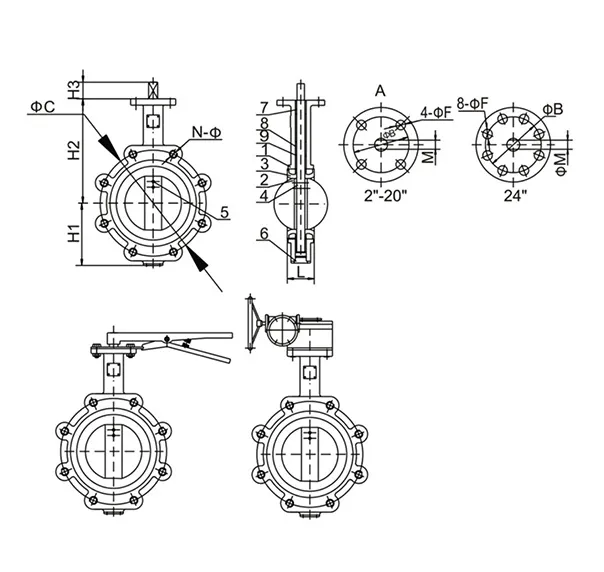9 月 . 14, 2024 01:05 Back to list
non return swing check valve
Understanding Non-Return Swing Check Valves Functionality and Applications
A non-return swing check valve, commonly referred to simply as a swing check valve, is a critical component used in various piping systems to ensure the unidirectional flow of fluids. One of its primary functions is to prevent backflow, which can lead to contamination, pressure drops, and system inefficiencies. This article will delve into the functionalities, advantages, and applications of non-return swing check valves, highlighting their importance in industrial, municipal, and residential systems.
Design and Function
The swing check valve features a simple yet effective design that includes a disc or a flap hinged to the valve body. When fluid flows in the intended direction, the disc swings open, allowing passage. However, when the flow reverses, the disc closes under the influence of gravity and the backflow pressure. This mechanism ensures that the flow of fluid is controlled effectively, preventing any reverse movement, which is crucial for applications where movement consistency is essential.
Advantages of Swing Check Valves
1. Reliability Non-return swing check valves offer a reliable solution for backflow prevention. Their mechanical design inherently provides durability and resistance against wear and tear, thus ensuring long-term service with minimal maintenance.
2. Low Pressure Drop Unlike some other types of check valves, the swing check valve typically provides a lower pressure drop across the valve during normal operation. This characteristic is vital in preserving energy and maintaining system efficiency.
non return swing check valve

3. Ease of Installation and Maintenance These valves are generally uncomplicated in their construction, making them easy to install and maintain. The straightforward design allows for quick inspections and repairs, minimizing downtime in industrial applications.
4. Versatility Swing check valves can handle various fluids, including water, gases, and certain chemicals, making them suitable for diverse applications ranging from water supply systems to chemical processing.
Applications
Non-return swing check valves are widely used across multiple sectors. In municipal water systems, they prevent backflow, ensuring clean water supply and the safety of drinking water. In industrial settings, these valves are integral in chemical processing systems, oil and gas pipelines, and HVAC systems to maintain the desired flow and pressure integrity. Additionally, residential plumbing systems often incorporate swing check valves to safeguard against potential backflow that may introduce contaminants.
Conclusion
In conclusion, non-return swing check valves are indispensable components in many fluid handling systems. Their ability to effectively prevent backflow while offering low pressure drop, reliability, and ease of maintenance makes them a preferred choice across various industries. Understanding their functionality and advantages enables engineers and technicians to design more efficient systems while ensuring safety and performance. As industries continue to evolve and expand, the role of swing check valves will remain significant in promoting fluid integrity and system reliability.
Share
-
Understanding the Differences Between Wafer Type Butterfly Valve and Lugged Butterfly ValveNewsOct.25,2024
-
The Efficiency of Wafer Type Butterfly Valve and Lugged Butterfly ValveNewsOct.25,2024
-
The Ultimate Guide to Industrial Swing Check Valve: Performance, Installation, and MaintenanceNewsOct.25,2024
-
Superior Performance with Industrial Swing Check Valve: The Essential Valve for Any SystemNewsOct.25,2024
-
Industrial Swing Check Valve: The Ideal Solution for Flow ControlNewsOct.25,2024
-
You Need to Know About Industrial Swing Check Valve: Functionality, Scope, and PerformanceNewsOct.25,2024